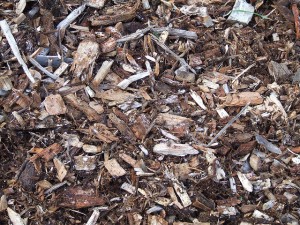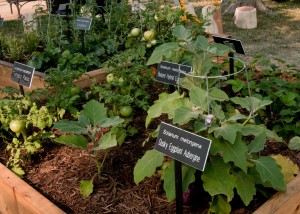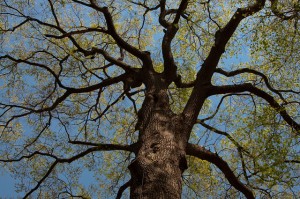Dealing With Drought
go.ncsu.edu/readext?432054
en Español / em Português
El inglés es el idioma de control de esta página. En la medida en que haya algún conflicto entre la traducción al inglés y la traducción, el inglés prevalece.
Al hacer clic en el enlace de traducción se activa un servicio de traducción gratuito para convertir la página al español. Al igual que con cualquier traducción por Internet, la conversión no es sensible al contexto y puede que no traduzca el texto en su significado original. NC State Extension no garantiza la exactitud del texto traducido. Por favor, tenga en cuenta que algunas aplicaciones y/o servicios pueden no funcionar como se espera cuando se traducen.
Português
Inglês é o idioma de controle desta página. Na medida que haja algum conflito entre o texto original em Inglês e a tradução, o Inglês prevalece.
Ao clicar no link de tradução, um serviço gratuito de tradução será ativado para converter a página para o Português. Como em qualquer tradução pela internet, a conversão não é sensivel ao contexto e pode não ocorrer a tradução para o significado orginal. O serviço de Extensão da Carolina do Norte (NC State Extension) não garante a exatidão do texto traduzido. Por favor, observe que algumas funções ou serviços podem não funcionar como esperado após a tradução.
English
English is the controlling language of this page. To the extent there is any conflict between the English text and the translation, English controls.
Clicking on the translation link activates a free translation service to convert the page to Spanish. As with any Internet translation, the conversion is not context-sensitive and may not translate the text to its original meaning. NC State Extension does not guarantee the accuracy of the translated text. Please note that some applications and/or services may not function as expected when translated.
Collapse ▲Key Points:

Image by Jessica Cross
- Don’t encourage growth: no new plants, no fertilizing, no pruning, except to remove dead or dying branches.
- Manage mulch: Ensure all vegetable, flower, and landscape beds have a 4″ layer of mulch to conserve water, keep soil temperatures cool, and prevent weeds from competing with desired plants. Consider mulching in a doughnut shape around trees and shrubs from the trunk to the dripline to prevent competition from turf, weeds, and other plants. Keep mulch 6 inches from the base of the trunk.
- Remove weeds: Prevent them from competing with plants for moisture.
- Allow your lawn to go dormant: It is much less stressful for the turf to remain dormant than it is to be active and drought-stressed.
- Remove plants that are past their prime or stressed by disease or insects.
- Water Slowly to prevent runoff. Consider installing an irrigation system, using soaker hoses, placing slow-release watering bags, drilling small holes in multiple five-gallon buckets or milk jugs and filling them with water. Water the entire root zone of the plant.
- Infrequent, deep watering promotes deeper roots and greater drought tolerance.
- Make Notes of what dies, what survives, what steps were effective, and what didn’t work.
- After the drought consider transplanting plants to group those with like water needs to make it easier to care for them in the next drought.
- Plan to make your landscape more resilient to drought conditions. Select drought-tolerant plants to replace those that died. Since in addition to drought we also have flooding, select plants that are tolerant of both. Stress-Tolerant Bedding Plants, Plants.ces.ncsu.edu
Fruits and Vegetables

U.S. Department of Agriculture People’s Garden Initiative
- Keep the garden just large enough to meet your needs. Consider water restrictions before starting a vegetable garden.
- Select crops that mature quickly and are drought-resistant.
- Incorporate compost into the soil to improve water permeability.
- Install and manage a water-efficient drip irrigation system or use soaker hoses to ensure water is applied directly where needed and slowly enough to soak in.
- To maintain production supplement rainfall to ensure plants receive 1″ of water per week.
- Take special care to avoid drought stress during germination, transplanting, and fruit development.
- Fruit and nut trees need adequate water from bloom until harvest for good fruit production.
Ornamental Plants

Image by Leo Suarez
- Reduce the amount of water used in your landscape by 20 – 40 percent or more by gradually (over a few weeks) decreasing the amount of water applied to lawns, trees, and plants.
- Continue to water through the winter as roots are growing even when plants are dormant.
- Identify priorities for watering ornamentals:
- Top Priority:
- Trees and shrubs planted within the last 2 years will be most vulnerable to drought stress since their root system is not fully developed.
- Established trees and shrubs are the biggest investment of time and money, and have the biggest impact on the landscape and house.
- Rare or unusual specimen plants that would be difficult or expensive to replace and those with high sentimental value.
- Evergreens: Drought in the fall is particularly dangerous to evergreens like rhododendrons, boxwood, pine, and spruce that lose water throughout the winter as cold winds pull moisture from their needles and leaves. Once the ground freezes, the plant can not pull in any more water through its roots until the ground thaws. If the plant is already drought-stressed then needles and leaves may die. To prevent damage to evergreens ensure they receive an inch of water per week.
- Medium Priority:
- Drought-sensitive plants like hydrangeas, Japanese maples, azaleas, and dogwoods are unlikely to survive an extended drought.
- Lowest Priority: (consider removing to conserve water for cherished plants)
- Plants you don’t like and plan to replace;
- Plants that are often stressed in your landscape;
- Annuals are the least expensive, easiest to replace, and will die at the end of the season even if watered.
- Plants in crowded beds.
- Top Priority:
Lawn

Design by Jay@MorphoLA
- Limit turf to play and entertainment spaces. Lawns often require the most water, fertilizer, pesticide, and maintenance in the landscape so use only where functional. Where turf is not essential, replace it with drought-tolerant ground covers, mulch, deck, or paths.
- Install drought-tolerant varieties adapted for your climate, for example, Bermudagrass, and Zoysiagrass.
- Adjust the watering schedule based on rainfall, heat, and day length.
- Water in the early morning to minimize evaporation while also limiting disease potential.
- Set the mower to the highest recommended cutting height for your turf variety to slow growth, promote deep roots, protect from sunburn, shade soil, and reduce weeds.
Don’t let one year’s dry weather convince you to create a desert landscape. We also have very rainy weather. Create a landscape using resilient plants that tolerate both wet and dry conditions.
Use of Bath Water and Other Gray Water on Plants
By North Carolina law, bathwater, dishwater, washing machine water, and all other household water (except water from toilets), known as gray water, is sewage, and legally can only be disposed of through a proper system. If you intend to use grey water, make sure you understand the safety ramifications. Never use gray water on anything that may be eaten and do not spray gray water, or allow it to puddle or run off your property. Do not use water that has come in contact with soiled diapers, meat, poultry, or anyone with an infectious disease. Never use toilet water, also known as black water which must go to a treatment facility.
Thanks to Charlotte Glen and the University of California for the information used in this post.


